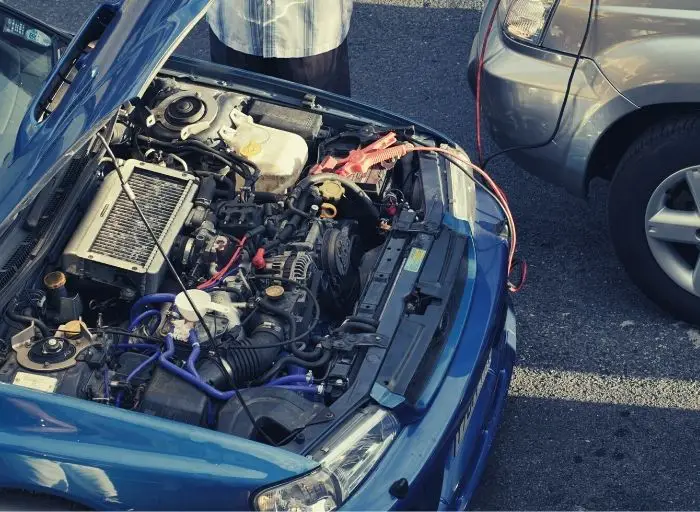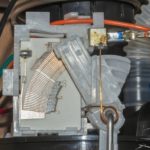
On a nice day, being stranded due to a dead battery is awful enough. Being trapped due to a dead battery in severe weather, on the other hand, is like adding salt to injury. So, can you jumpstart a car in the rain?
In short, jump-starting a vehicle in the downpour is no more hazardous than on a dry day. Humidity would not be a problem.
Table of Contents
Can You Jumpstart a Car in the Rain?
According to experts, jumpstarting a vehicle in the rain is possible because the vehicle’s voltage is insufficient.
It’s entirely safe to jumpstart your car in the rain as long as you follow a few easy rules:
- Before connecting the cords, turn off both cars.
- Place one of the wires’ red clamps on the dead battery’s positive post.
- Place the other red clamp on the good battery’s positive post.
- Place a black clamp on the good battery’s negative post.
- Attach the other black clamp to a major metallic component of the dead car’s engine block to ground it. It should not be connected to the battery.
- With a good battery, start the car.
- With the bad battery, start the car. Allow it to run.
- Reverse the sequence in which you connected the cables
- Allow the alternator to recharge the battery by driving the car with the flat battery (or leaving it idling) for at least 30 minutes.
FAQs
#1 Can you jumpstart your car in a thunderstorm?
Thunderstorms bring with them the element of lightning. When you’re working with an electrical system, it’s natural to get a little nervous.
Is it safe to jump-start a car in the middle of a thunderstorm? Yes, jump-starting an automobile is a completely safe procedure.
However, even being outside during a severe thunderstorm carries risks. You’re all familiar with the methods. Don’t stand in the middle of a field or under a tree.
If you’re not in a hurry, however, I recommend waiting until the storm has passed, as thunderstorms don’t stay long.
#2 Is using jumper cables on a wet battery safe?
Yes, it is safe; however, before connecting the jumper cables, drain any extra water from the battery. Also, while you’re trying to jump the battery, keep it as dry as possible.
#3 Can I use my jumper cables if they get wet?
Yes, but I must qualify this assertion once more. If they become wet, make sure they’re completely dry before putting them away.
The majority of the jumper cables should be rubber-coated. The rubber is impervious to water. As a result, this region is protected.
You should be fine even though there is an uncovered region on the cables. I wouldn’t touch that region and, as soon as possible, I’d wrap extra electrical tape around it.
The clamps are the region where you should be most worried. That’s the only exposed metal portion. If the clamps are stored wet, they will rust.
Last Thoughts
Jump-starting an automobile is a simple process with the right cables and preparations. Take your time, study the vehicle’s manual, and connect the cables carefully.
You don’t get to pick the weather while you’re dealing with an emergency. Go ahead and use the jumper cables in the downpour if you need to.
Hi there! I’m Naomi O’Colman. I’ve got years of experience working at an auto repair shop here in Texas under my belt. On top of that, ever since I was a kid I’ve been passionate about the auto industry. Since I’ve joined the team at automotivegearz.com I’ve been enthusiastically sharing my passion and insights with my readers. I’m dedicated to delivering high quality content and helping you stay up to date with the latest automotive trends and products out there!







